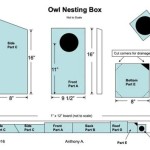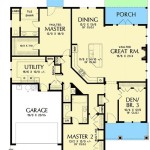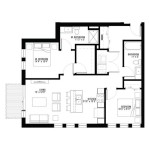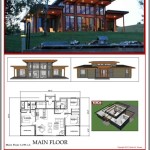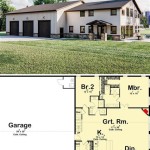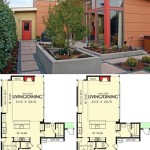Sample House Plans With Dimensions In Meters
Designing a house is a complex process, requiring careful consideration of spatial needs, building codes, and aesthetic preferences. Sample house plans with dimensions in meters provide a valuable starting point for prospective homeowners or builders. These pre-designed blueprints offer a visual representation of the layout and structural details, enabling informed decision-making and efficient construction. Focusing on metric measurements ensures precision and aligns with international standards, particularly in regions where the metric system is predominantly used.
The availability of sample plans allows for the exploration of different architectural styles, room arrangements, and utilization of space. Analyzing these plans helps to understand the relationship between rooms, the flow of movement within the house, and the overall functionality of the design. Furthermore, incorporating precise dimensions in meters allows for accurate estimations of material requirements and construction costs.
Understanding the components and considerations involved in interpreting sample house plans is crucial for effective utilization. This includes deciphering architectural symbols, understanding the different line types used to represent walls and other features, and comprehending the meaning of annotations and labels. The ability to read and interpret these plans effectively empowers individuals to make educated decisions about their future homes.
Key Point 1: Benefits of Using Sample House Plans
The adoption of sample house plans presents several specific advantages. Firstly, it significantly reduces the initial design phase time and cost. Instead of starting from scratch, a pre-existing plan can be modified to suit individual requirements. This modification process is generally less time-consuming and expensive than creating a completely new design.
Secondly, sample plans offer a variety of styles and layouts, allowing potential homeowners to explore different options and identify designs that resonate with their aesthetic preferences and lifestyle. This visual exploration can be particularly helpful for individuals who have difficulty visualizing space or translating their needs into a concrete design.
Thirdly, the availability of dimensions in meters facilitates accurate cost estimations. Contractors can readily determine the quantity of materials needed, such as concrete, wood, and roofing materials, leading to more precise bids and reduced chances of cost overruns. This accuracy also assists in optimizing material procurement and minimizing waste on the construction site.
Fourthly, sample plans often include details regarding structural integrity and compliance with building codes. While local regulations always require verification by a qualified engineer, the presence of these details in the sample plan provides a foundation for ensuring that the proposed design meets the necessary safety standards. This can streamline the permitting process and reduce the likelihood of delays or revisions.
Finally, sample plans can inspire innovative ideas and solutions. By reviewing numerous designs, individuals can gain insights into space-saving techniques, energy-efficient features, and creative architectural elements that they may not have considered otherwise. This exposure to different design approaches can lead to a more customized and ultimately more satisfying final product.
Key Point 2: Understanding Dimensions in Meters
The use of meters as the unit of measurement in house plans ensures consistency and precision, particularly in regions that have adopted the metric system. The metric system's base units are readily convertible, simplifying calculations and reducing the risk of errors. A meter is approximately equal to 3.28 feet, providing a tangible point of reference for those familiar with the imperial system.
When interpreting dimensions in meters, it's essential to understand the architectural conventions used to represent length, width, and height. Typically, plans will indicate the overall dimensions of the house, as well as the dimensions of individual rooms and features. These dimensions are often represented using decimals, such as 3.5 meters or 4.25 meters. Note that 4.25 meters is equivalent to 4 meters plus 25 centimeters, which is a quarter of a meter.
Internal wall thicknesses are also usually indicated to give a full picture of the space available within each room. External wall thicknesses will also need to be reviewed to understand the load bearing design. Doors and windows will also have dimensions specified to show both the outside frame sizes as well as the internal opening sizes.
The plan may also include notations indicating the clearance heights of doorways, windows, and other features. These clearances are vital for ensuring accessibility and preventing obstructions. Attention to these details is crucial for creating a comfortable and functional living space.
Furthermore, understanding the scale of the plan is essential for accurately interpreting the dimensions. The scale indicates the ratio between the dimensions on the plan and the actual dimensions of the house. For example, a scale of 1:100 means that one centimeter on the plan represents 100 centimeters (or one meter) in reality. Using a ruler or scale ruler, users can accurately measure distances on the plan and convert them to real-world dimensions.
Key Point 3: Customizing Sample House Plans
While sample house plans provide a useful starting point, it is generally necessary to customize them to meet individual needs and preferences. Customization may involve modifying the layout, altering the size of rooms, adding or removing features, and selecting different materials. The extent of customization will vary depending on the specific plan and the individual's requirements.
One common type of customization is adjusting the room layout to better suit the homeowner’s lifestyle. For example, a family with young children may prefer an open-plan living area that allows for easy supervision, while a single professional may prioritize a dedicated home office space.
Another frequent modification is altering the size of rooms to accommodate furniture or specific activities. For example, a homeowner who enjoys cooking may want to increase the size of the kitchen, while someone who collects books may want to expand the size of the library.
Adding or removing features, such as a garage, a patio, or a balcony, is another common type of customization. These additions or removals can significantly impact the overall cost and functionality of the house. It is important to consider the potential impact on the property's value and compliance with local building codes.
Selecting different materials, such as flooring, roofing, and siding, can also significantly impact the aesthetics and cost of the house. It is important to choose materials that are durable, aesthetically pleasing, and appropriate for the local climate. Consulting with a building professional can help homeowners make informed decisions about material selection.
When customizing a sample house plan, it is important to work with a qualified architect or designer. They can provide expert advice on how to modify the plan while ensuring that it meets building codes and structural requirements. Furthermore, they can help to visualize the proposed changes and identify potential problems before construction begins.
Customization also needs to consider the orientation of the building on the plot of land the house will be built on. This involves reviewing the path sunlight and wind patterns in any given seasons to avoid negative issues such as overheating during summer. This can be mitigated through the placement of windows and doors to maximise ventilation throughout the building.
Finally, it's important to remember the budget constraints. Each modification has the possibility of increasing costs considerably, so careful budgeting is vital for the success of a construction project. Before committing to any changes, ensure that the costs are fully understood and that the overall budget remains manageable.

A Floorplan Of Single Family House All Dimensions In Meters Scientific Diagram

12 Examples Of Floor Plans With Dimensions

12 Examples Of Floor Plans With Dimensions

Plans Simple Floor Measurements Jhmrad 76392 61

12 Examples Of Floor Plans With Dimensions

12 Examples Of Floor Plans With Dimensions

How To Read A Floor Plan With Dimensions Houseplans Blog Com

Plan 8787

12 Examples Of Floor Plans With Dimensions

Floor Plans Of A House Project Overview Green Arch World
Related Posts

